Haibike makes beautiful, purpose built electric bikes that tend to cost more but deliver premium components and drive systems. The SDURO line runs on Yamaha mid-drive motors that can accommodate multiple chainrings, two in this case, providing a wider range of gears. Given the all-mountain design, with longer travel suspension and aggressive trail/mountain geometry, those gears come in handy for climbing and reaching the top assisted speed of 20 mph. Perhaps my largest complaint with the bike is that you truly need to switch gears in order to reach top speed. Unlike some of the other motors I have tested, the Yamaha drive seems to have a limited RPM range. This isn’t necessarily a bad thing as there are plenty of riders I’ve met with who love the design. And Yamaha celebrates the zero-cadence start feature of their motors (basically, they are supposed to start faster with electric-assist from standstill vs. making you slog through using your legs). This is a Class 1 electric bike meaning there is no throttle and that makes it permissible on the largest number of trails. It worked great for me in softer sandy terrain at low PSI and I enjoyed the comfort of the plus sized 3″ tires combined with 150 mm travel air suspension by RockShox. You end up with a tire circumference close to 29″ with these larger tires and that improves rolling momentum and gap spanning while reducing deflection off rocks and other obstacles. In short, this is an electric bike that is easy to work on, balanced and stable to ride, relatively lightweight but capable of steep climbs and longer range if ridden properly. There is no shift sensing technology as you’d find with Bosch or Impulse but the price is slightly lower and with a bit of practice you can shift without issue.
Driving the bike is a compact, relatively quiet internally geared mid drive motor from Yamaha. It interfaces with the frame beautifully and does not protrude as much to the sides or down as some other centerdrive systems. Despite a modest 250 watt nominal rating, you get 80 Newton meters of torque which has been plenty to get me up even the steepest climbs, while pedaling in low gears, to the point where the tire would lose traction but the motor would still be trying to go. As a lighter weight guy, weighing about 135 lbs, that might not impress you… but the owner of the Electric Bicycle Center in Fullerton, Sam Townsend, was using this as a demo and reported excellent performance even for his 250 lb body weight. I love that the bike comes in four frame sizes and that the battery design is optimized to slide out from the side vs. pop up because it results in a lower top tube and lower stand over height. It all works to keep weight low and center on the frame and that makes handling easier.
The battery pack itself offers 36 volts and 11 amp hours which is just a touch above average… but ver capable given the way it operates. You can charge it on or off the frame but the plug is an insert, twist and lock style which means it could get broken off, bent or tip the bike if tripped over. Many other premium e-bikes have been opting for the EnergyBus Rosenberger standard in recent years because it pops out easily in these situations without causing harm. The charger itself is kind of large and heavy so I’d be less excited to toss it in my backpack and there are no rack, fender or bottle cage bosses on the ALLMTN Plus so you literally have to wear a hydration pack or backpack to bring gear along. I understand why this is the case given the two longer travel suspension elements and battery but it does come at a cost and some other electric mountain bikes like the Specialized Turbo Levo FSR have made it all fit, even with full suspension and at the same price point. I do appreciate the charge indicator on the battery pack and the way it powers a Micro USB port on the button pad (which is mounted conveniently near the left grip).
Operating this and other Yamaha powered electric bikes from Haibike is fairly straight forward. The All Mountain Plus model comes with an upgraded display panel LCD that shows ride stats, speed and battery charge level. I LOVE that you get 10 tics on the battery info graphic as well as a percentage indicator because it helps you plan rides more effectively. As fun as this ebike is, I still wouldn’t want to run out of battery and have to climb long distances with its ~52 pound weight. To turn it on you simply mount the charged battery then press a power button on the top edge of the button pad. This pad is easy to reach and memorize so you won’t always have to look down when riding. The buttons seem well sealed against water and the pad itself is relatively compact. The display however, is large, making it easy to see but also a bit vulnerable. For this reason, it’s great that they made it removable. Whether you’re stopping for lunch or bombing a large difficult section, being able to take the display off and store it safely could be a big deal. The bars however, are low-rise and help to protect it if you do crash but the stem is angled down slightly so the overall geometry works as expected. This thing is built with performance in mind all the way around and aside from the weight, doesn’t feel dumbed down.
There’s a lot to celebrate about the Haibike SDURO ALLMTN Plus, it’s one of the higher-end offerings with a Yamaha drive system that I’ve tested and I think the larger tires make sense for this sort of application. I love the sturdy and stiff thru-axles, the name brand suspension with full adjustability and especially the seat post dropper. Despite having a front and rear derailleur (which means two sets of shifters), the cockpit stays manageable… You can still reach the dropper switch and the button pad and I like the locking grips they chose. For me personally, the lack of shift sensing was easy to overcome but given how powerful the motor is and what I have heard from owners of Bosch systems (which do have shift sensing) I suspect the chain, sprockets, and derailleurs will need more frequent tuning and I’d approach this bike carefully, perhaps riding on paved surfaces, to get used to it all before charging up steep hills. I don’t love having to shift frequently through a range of gears to hit a certain desired speed but in practice, maybe speed isn’t as much of a focus as instant power and smooth quiet delivery? There are a lot of people who like this setup and are happy to save the $500 to $1,000 vs. Bosch. Ultimately, it’s the kind of thing you might want to try by visiting a local shop if you can. For those who have never ridden an electric bike, this will probably feel amazing… but as someone who tests regularly and likes to spin faster (due to a knee sensitivity) this is not my first choice.
Pros:
- Plus sized tires (those over 2.8″ wide) have caught on with electric mountain bikes because they can run at lower PSI, provide better traction and cushion and reduce deflection and slipping on rocky surfaces, the SDURO ALLMTN Plus uses higher quality Schwalbe tires that are 3″ wide
- Available in four frame sizes, this electric bike offers higher performance and fit, I love how the top tube is angled down for lower stand over height (the battery slides out sideways to help achieve this
- Excellent weight distribution with both the motor and battery mounted towards the center of the frame and kept low
- The motor is powerful and responsive offering smooth starts and stops (measuring pedal cadence and torque to activate), you get up to 80 Nm of torque which makes it an excellent climber if you shift gears appropriately
- Beautiful paint and graphics… Haibike has long been a favorite of mine because they just look cool and professional, notice the fork and saddle are tied in, non-ebikers seem more interested because it looks legit
- Higher-end lightweight air suspension front and rear offers a ton of travel so you can handle a bit of downhill and use it as a true all mountain electric bike
- The battery can be charged on or off the bike frame and is easy to remove (though it does not rattle or feel loose when mounted to the frame), it weighs about 6.5 lbs so taking it off could make mounting the bike to car racks safer and easier (more space in the triangle)
- The Yamaha display system is a real standout to me, this is their upgraded model with a larger LCD which is removable and you also get a remote button pad which is easy to reach while riding and it has a Micro USB port built in
- I’m a big fan of dropper seat posts and love that the ALLMTN Plus comes with one that is preinstalled with internally routed cabling (frankly, most of the cables and wires are internally routed through the custom purpose-built frame)
- Powerful hydraulic disc brakes from Magura offer the precise, smooth stopping power required for true off-road riding, note the four piston calipers and adjustable reach levers
- I’m not sure if this is stock but the ebike I got to test had a kickstand that was rear-mounted, keeping it clear of the crank arms… if you do commute with this thing it could be useful
- Sturdy thru-axles with quick release for easy trail maintenance and quick compact transportability, one big advantage of a mid-drive is that the drivetrain itself is more traditional and easy to work with for regular bike shops
- The Yamaha motor produces less noise than Bosch and Impulse 3.0 in my opinion, it’s a bit less noticeable (especially when riding on a dirt trail where the tires are already making noise just from rolling)
- The pedals you get with this Haibike aren’t half bad… I prefer the wide platform with metal pins to smaller cages which seem to get bent, it’s a minor thing but great for test rides at least
- The cockpit is well thought out, notice the negative angle stem and low-rise bars meant to approximate a flat bar while protecting the display panel in the event of a crash
- Rather than showing your battery percentage by default, the Yamaha display uses little bars on an info-graphic but I love that they have 10 bars (for 10% steps) vs. many other bikes that show just 5 or 6, if you flip through the readouts you can also get percentage which is fantastic but that same display area can be used for odometer, trip distance etc. so I love that you have a choice
Cons:
- Shifting gears is a big part of this electric bike system because it enables the motor to climb or hit higher gears… but I found that the range of motor RPM felt limited so even if I was comfortable pedaling at a higher cadence, I couldn’t achieve top speeds without shifting because the motor would cut out
- Unlike the Bosch and Impulse drive systems, the Yamaha mid-drive doesn’t offer shift sensing which could lead to chain and sprocket mashing, learn to shift as the motor cuts out (when you stop pedaling momentarily)
- The battery charger seems unnecessarily large and bulky compared with some of the other options out there, I wish Yamaha would consider the magnetic EnergyBus port vs. their plug which could get bent or knock the bike over if tripped on
- Haibikes tend to be more expensive and are frequently out of stock in popular sizes, I feel like they spread the line thin with so many options which can be disappointing if you visit a dealer and fall in love with a specific model
- While it’s neat to have 20 gear combinations, I don’t change the front very often and have become a fan of the lighter, less complex 1×11 setups… especially given the non shift sensing mid-drive motor systems
- I like how smooth the motor winds down as you stop pedaling but it isn’t as instantaneous as some other systems, notice how it continues rotating a bit during the ride test in the video review above
- Despite being a more athletic-oriented sporty electric bike, there are no bosses for adding a water bottle, you’ll probably need a hip pack or hydration backpack
Resources:
- Official Site: http://www.haibike.de/microsites/sduro/us/
- More Pictures: https://goo.gl/photos/jY5wyjWJTULNrhVL9

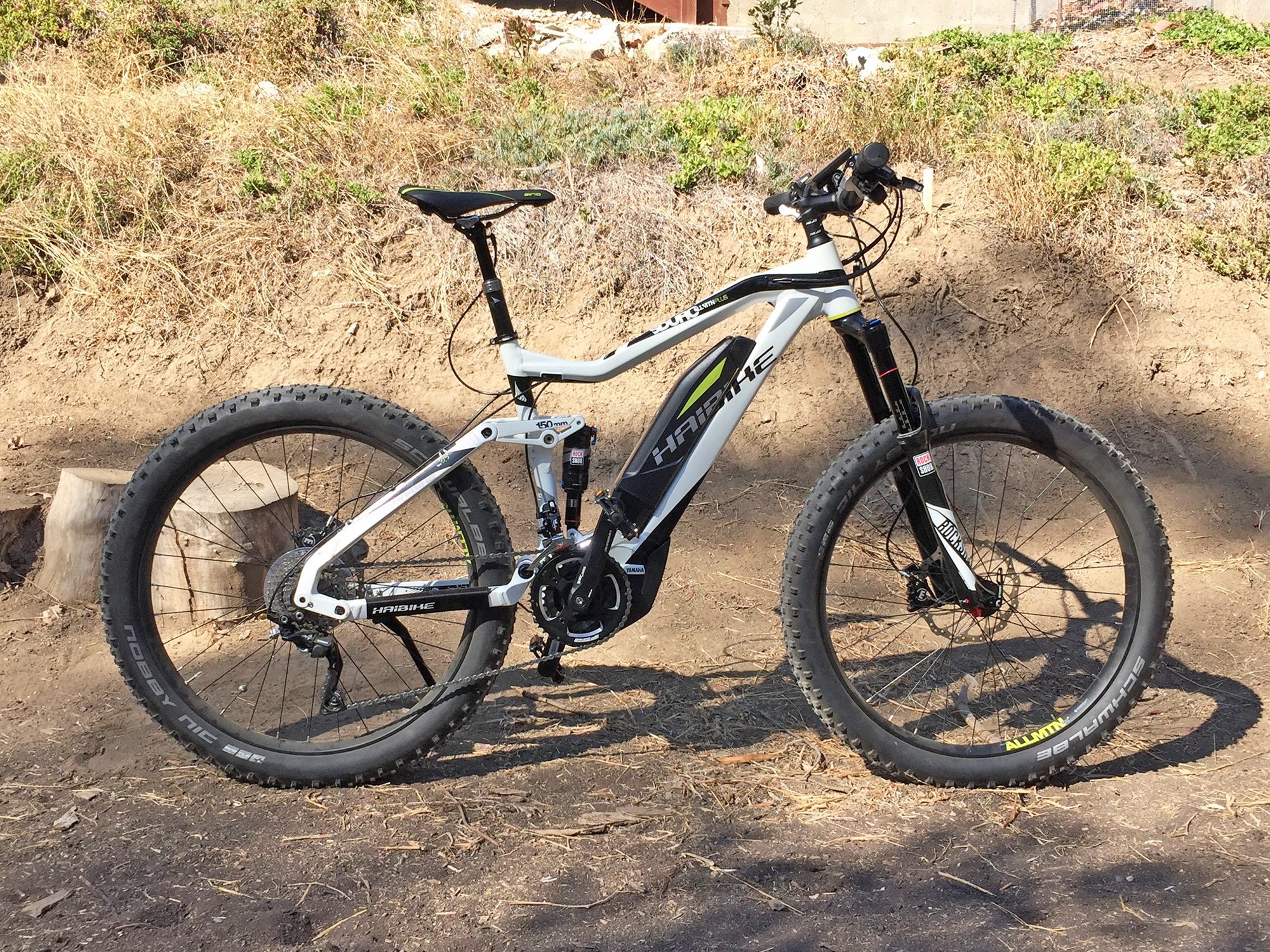


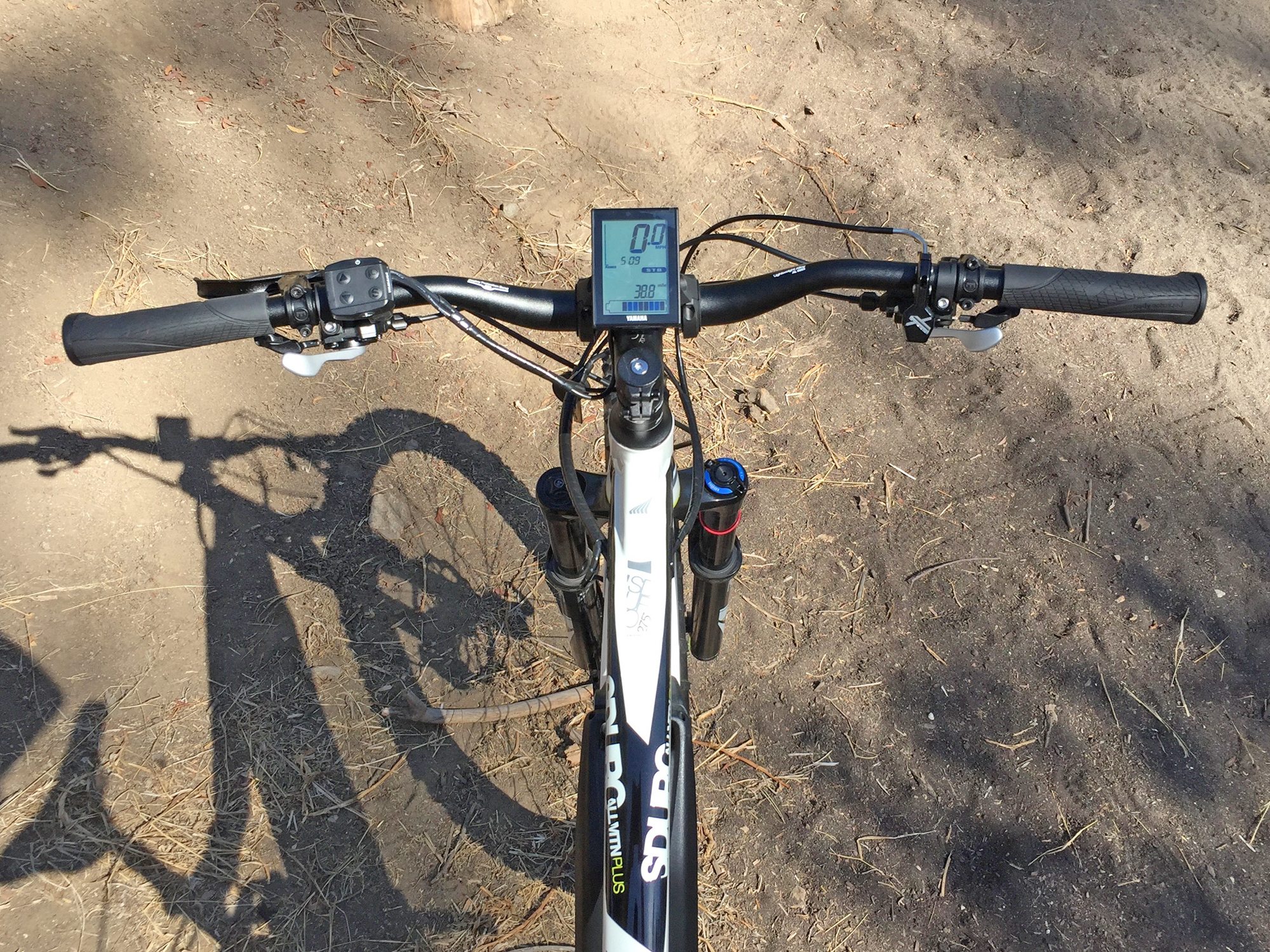
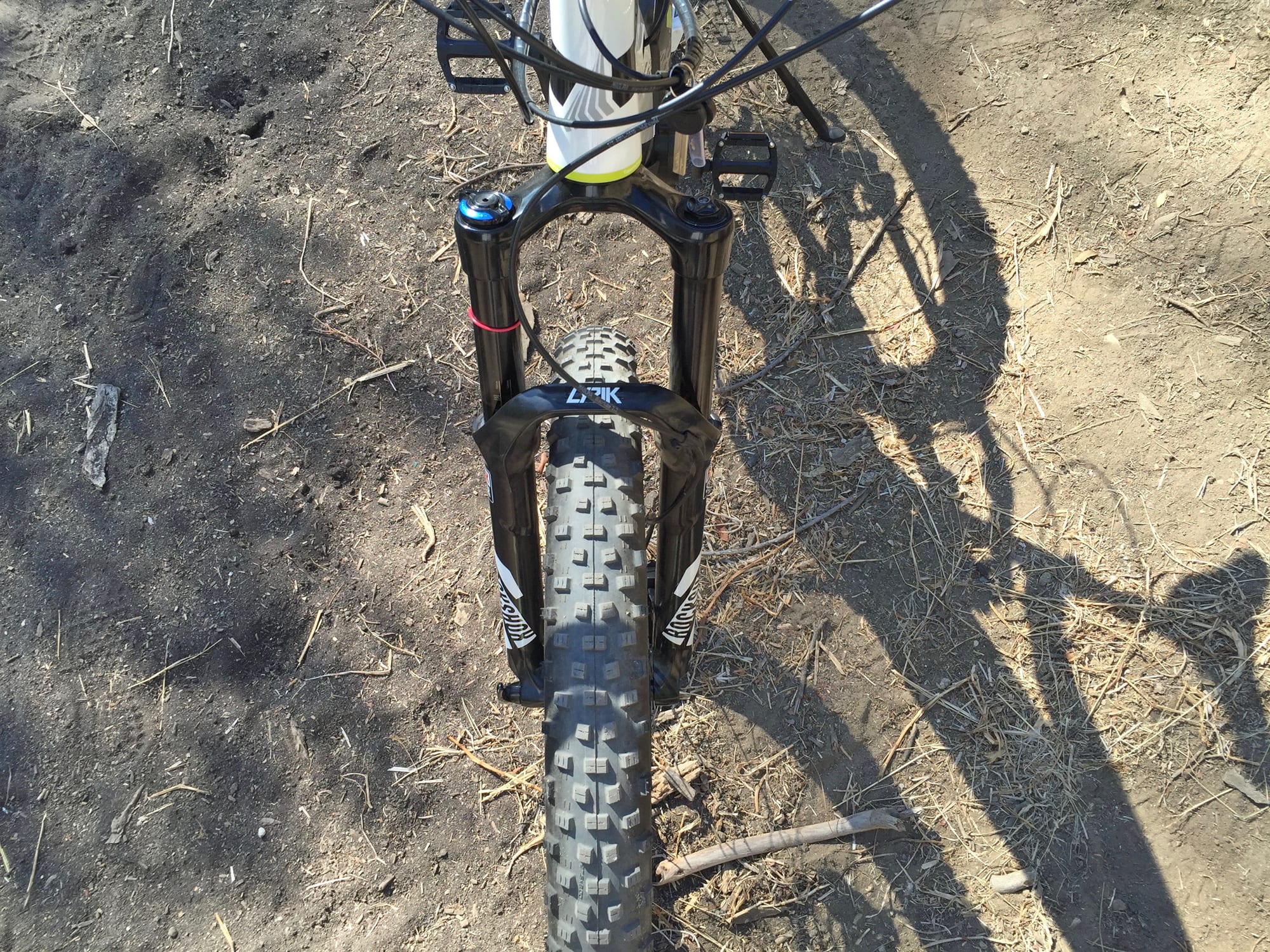
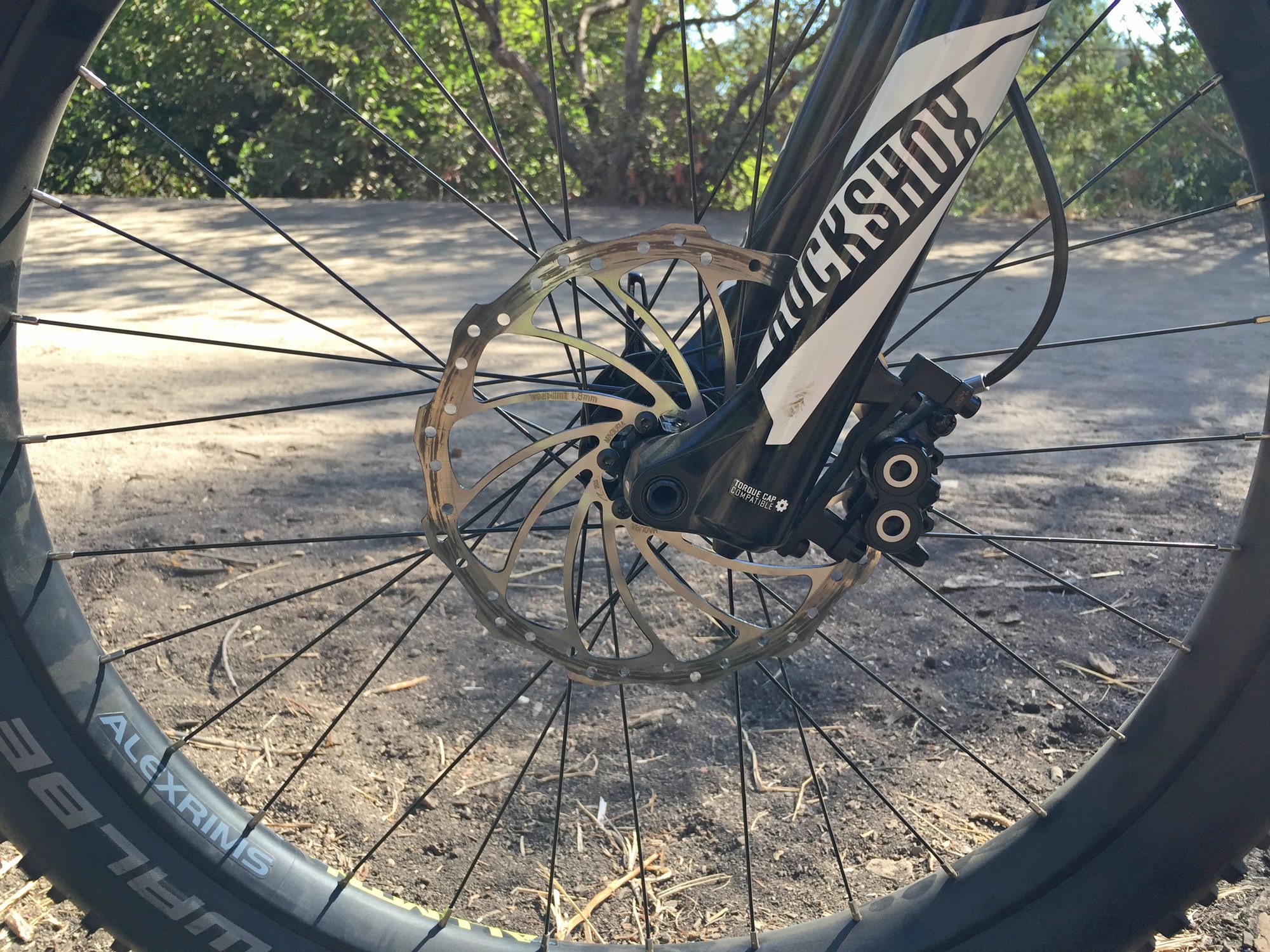
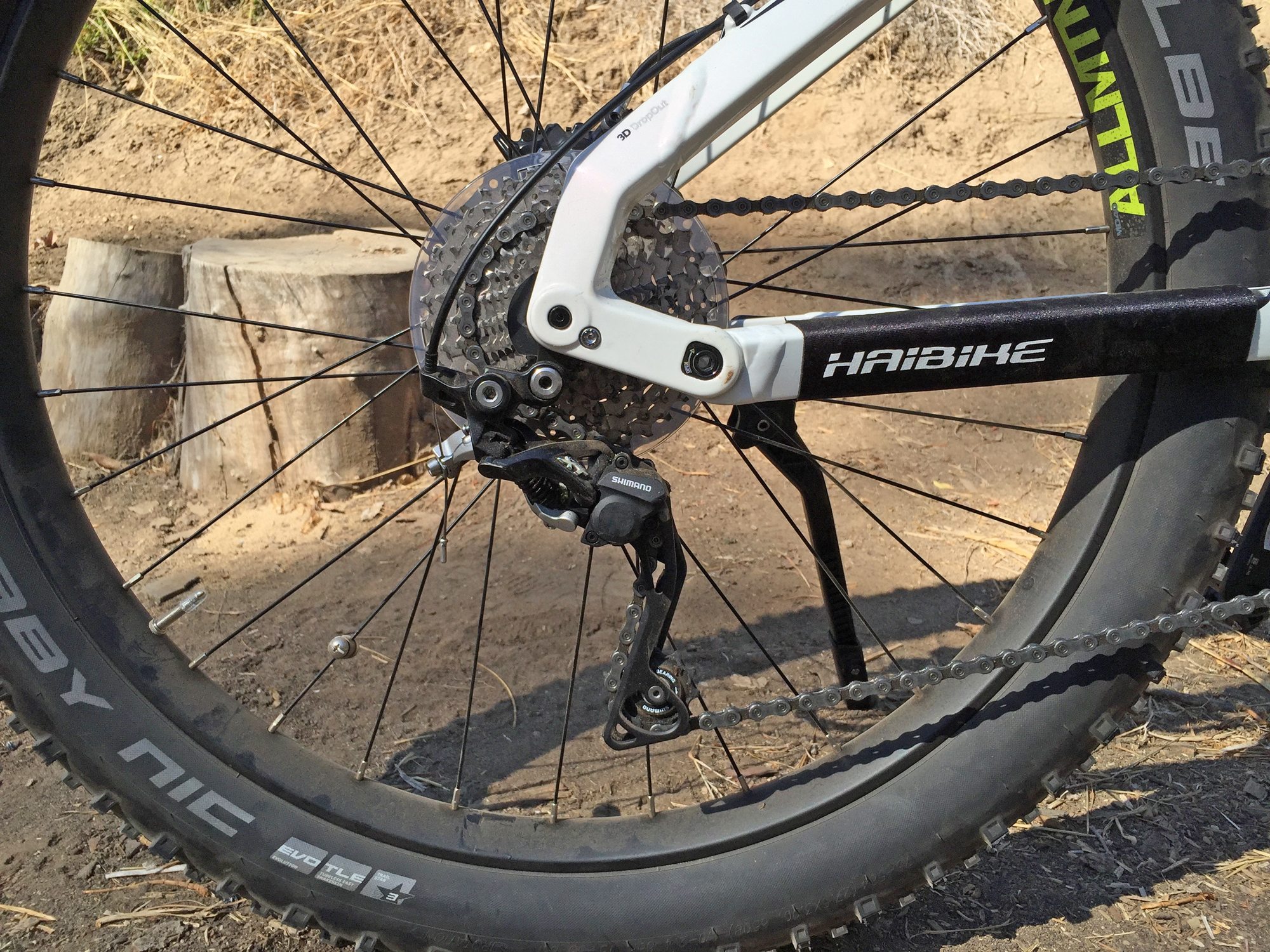
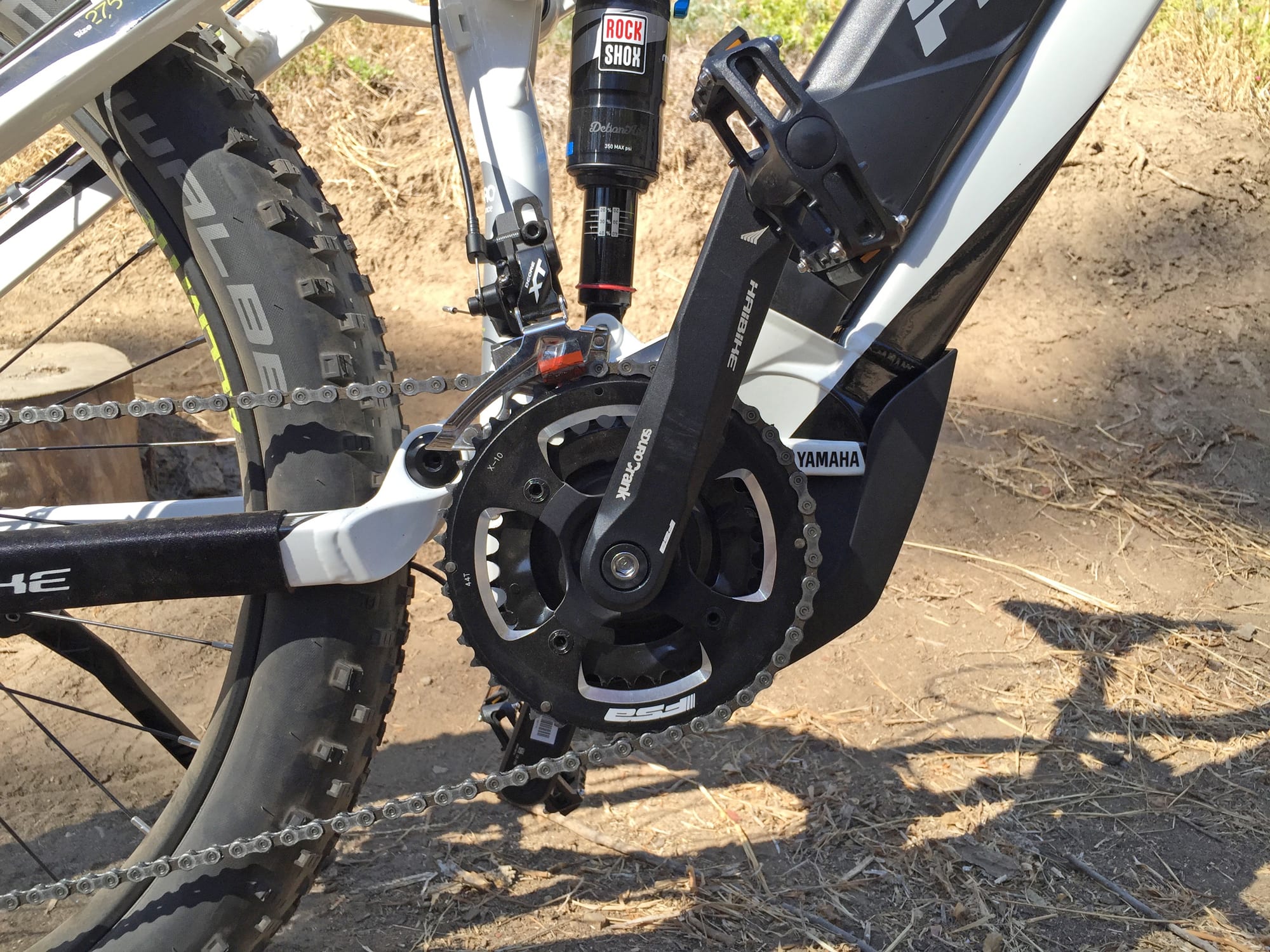
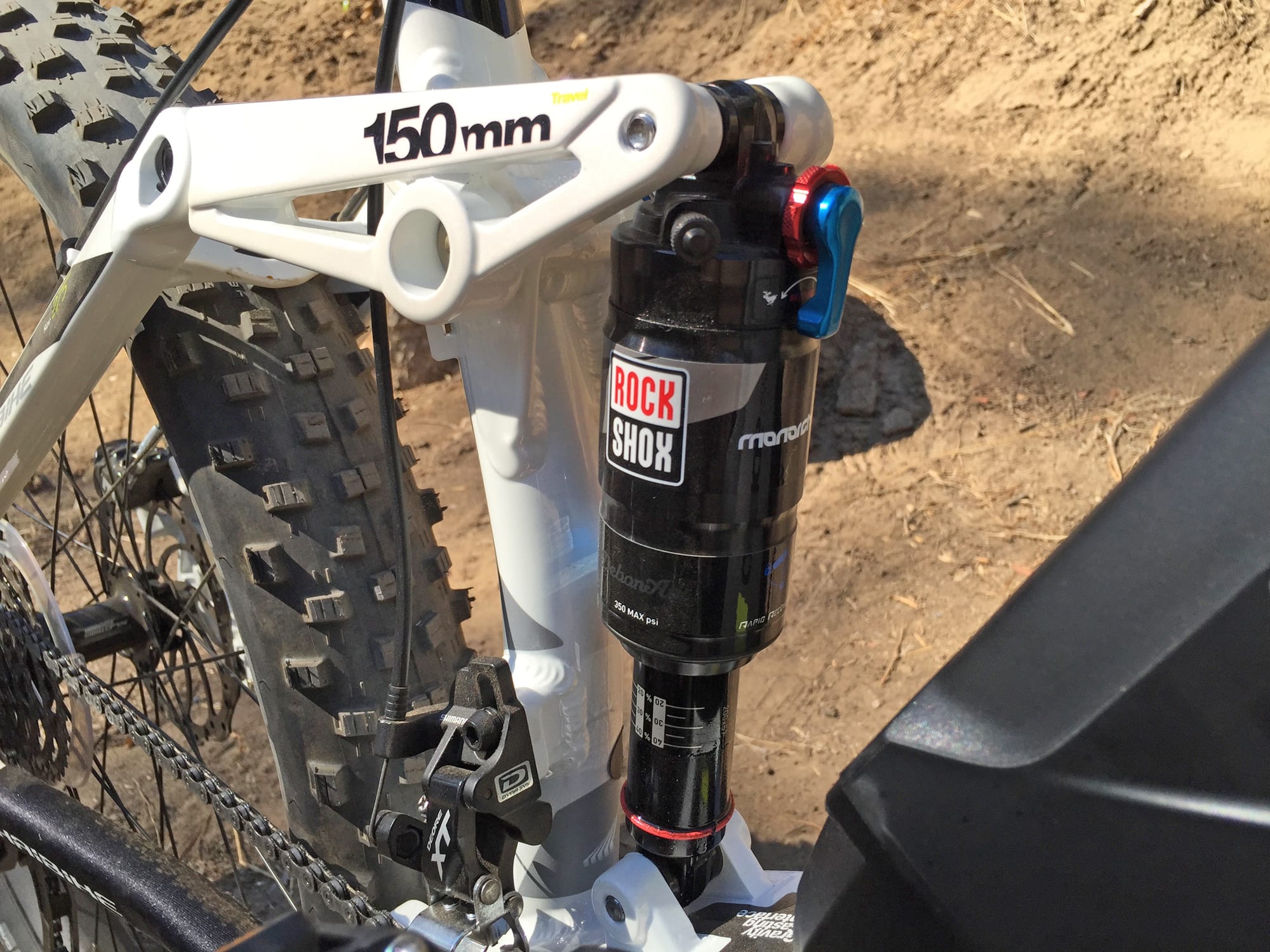


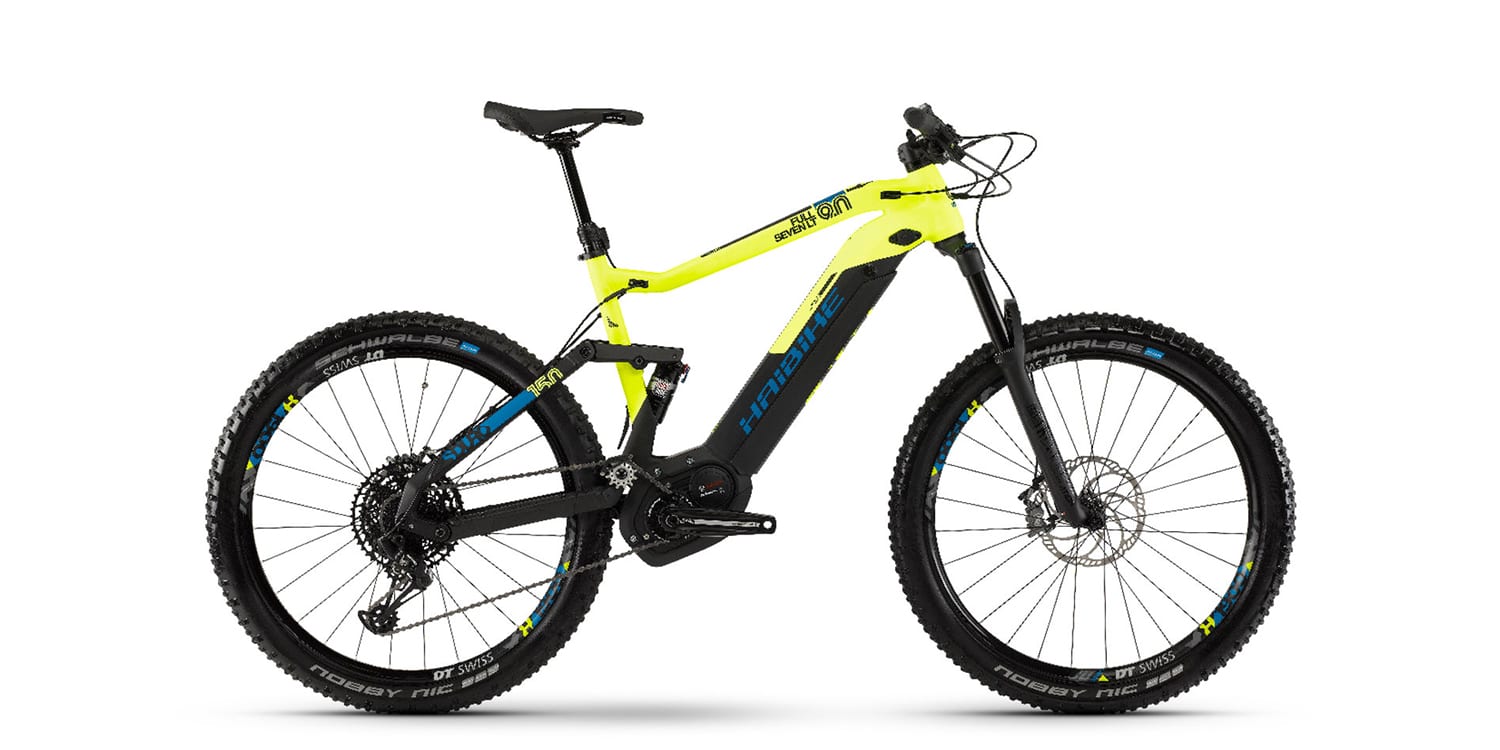
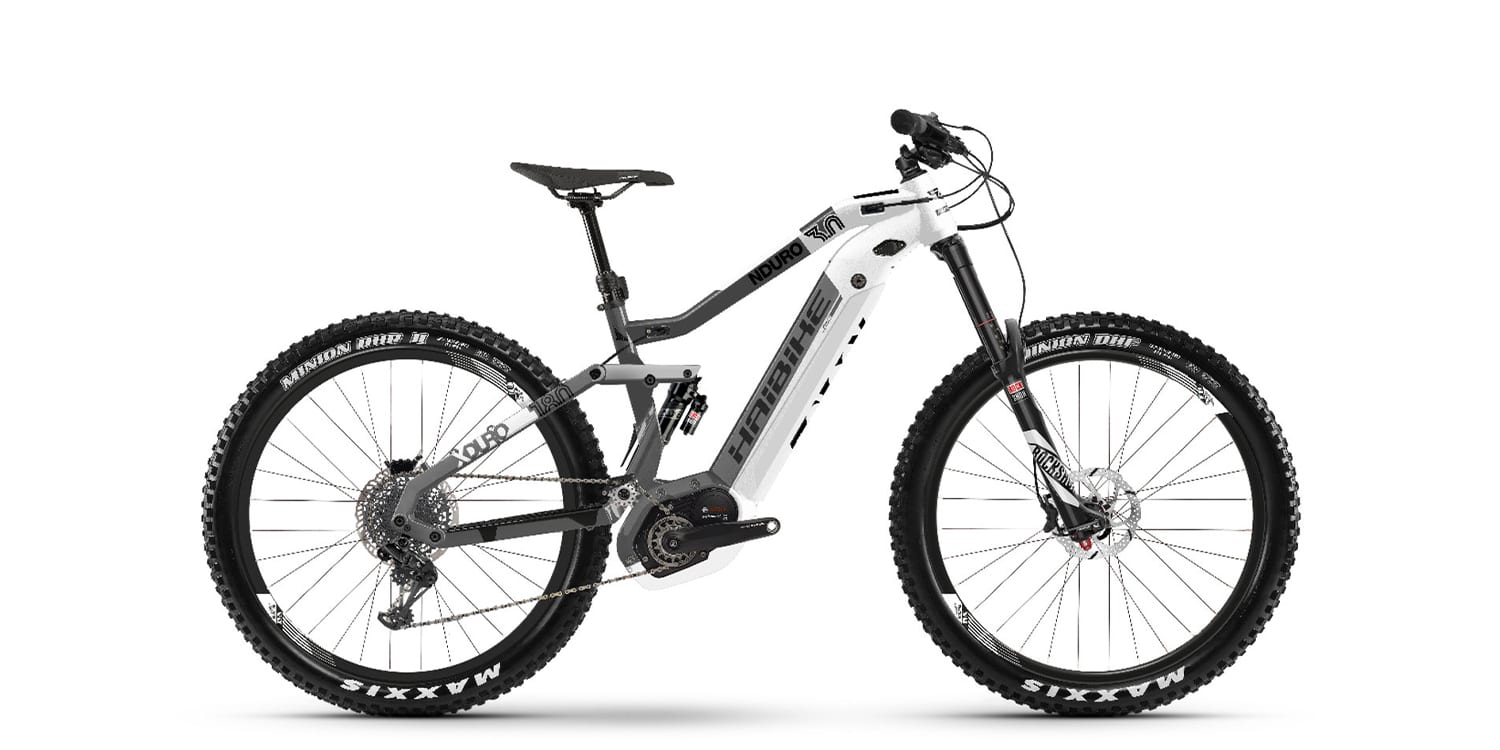
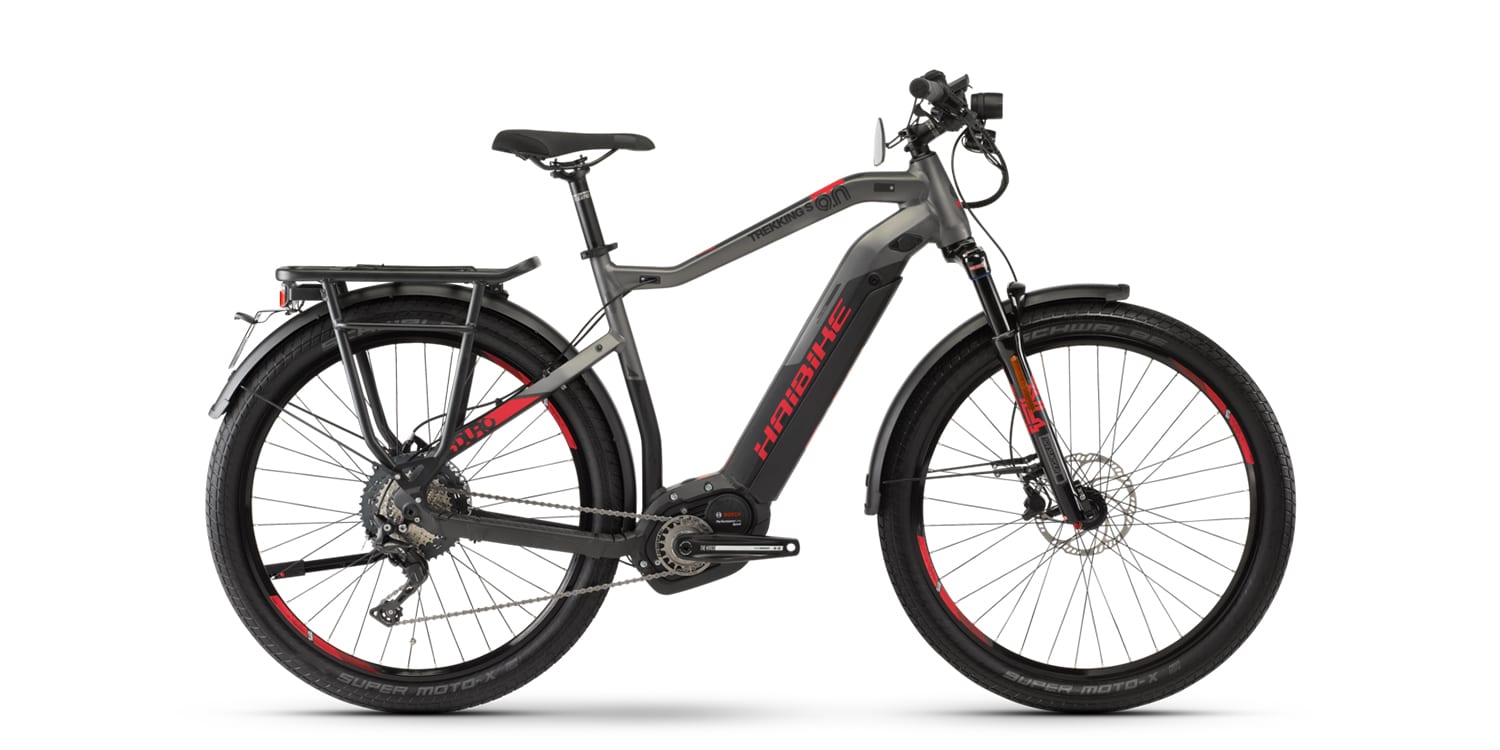
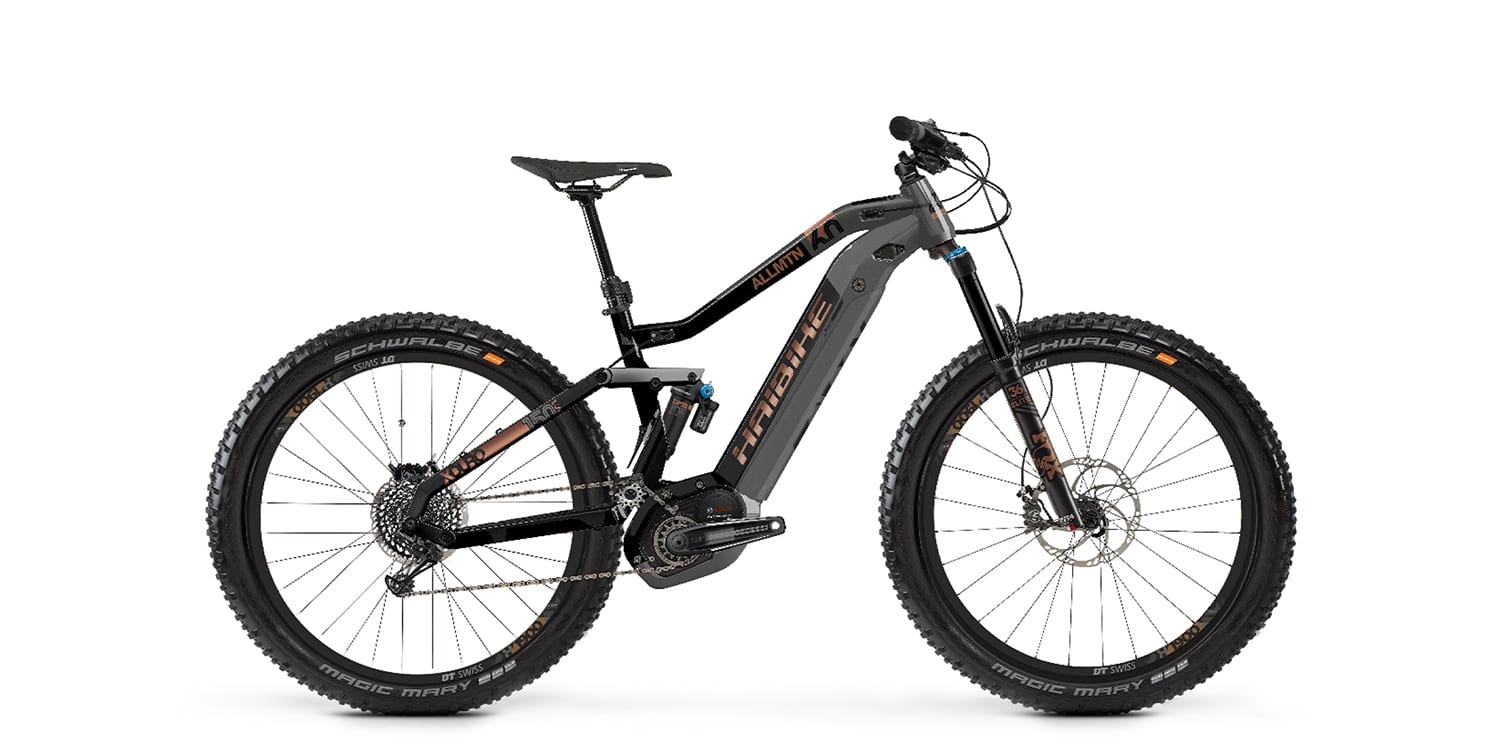
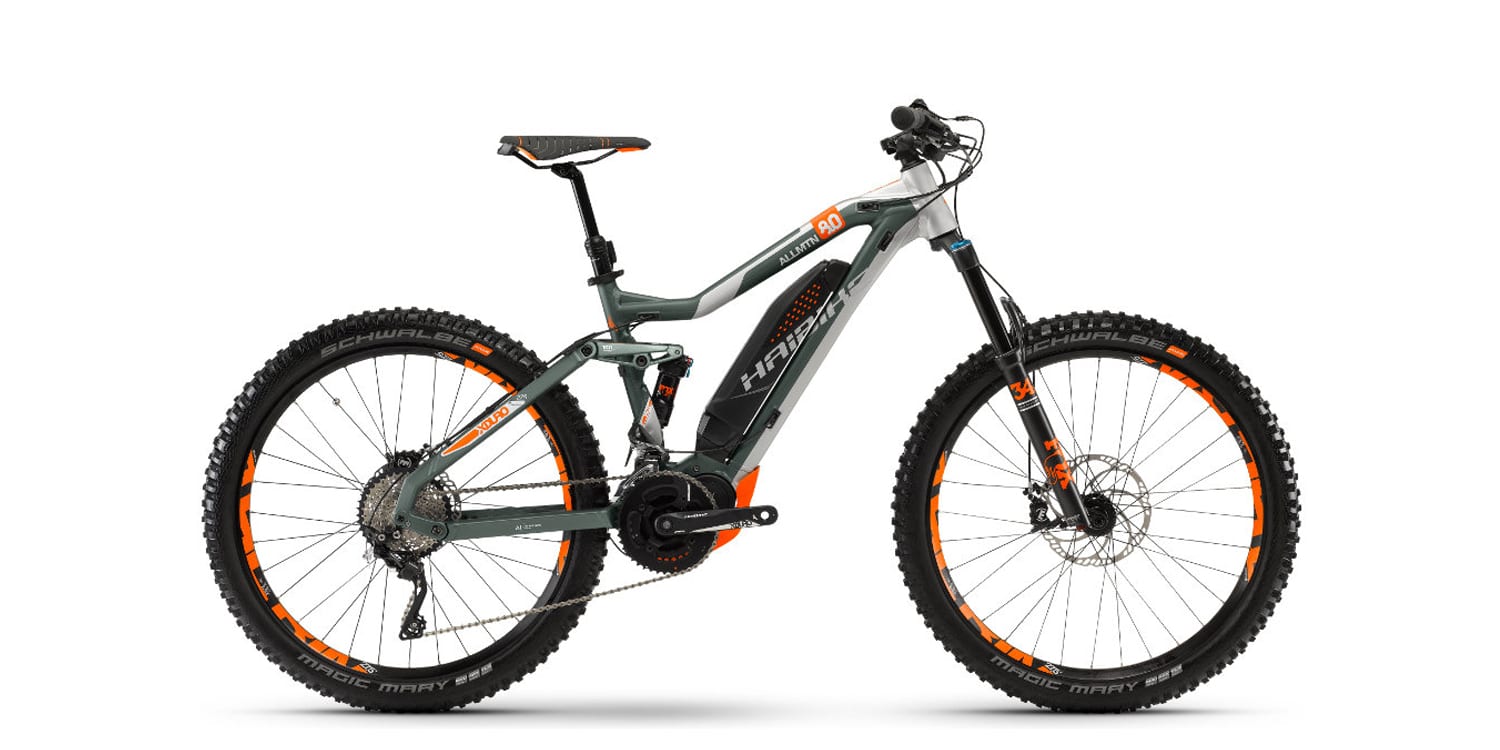
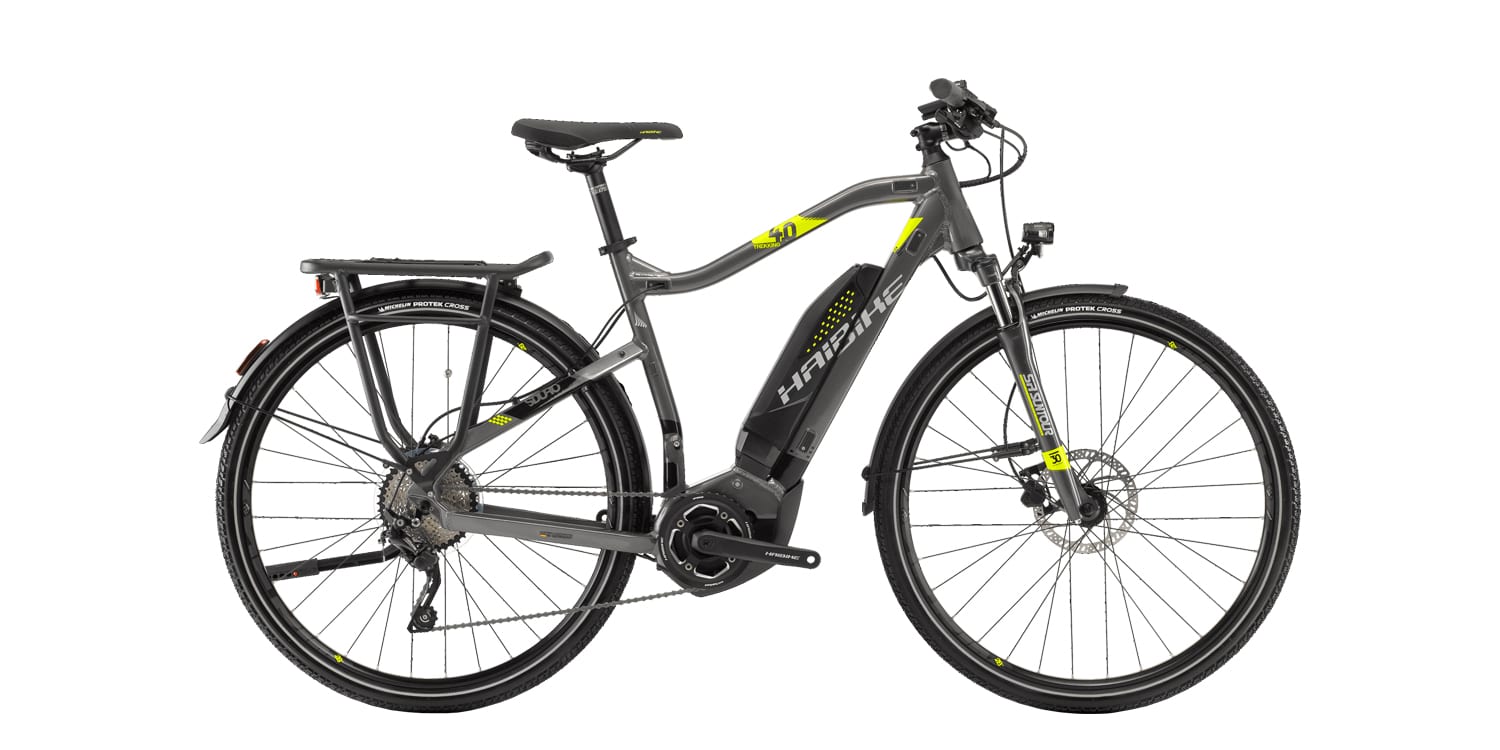

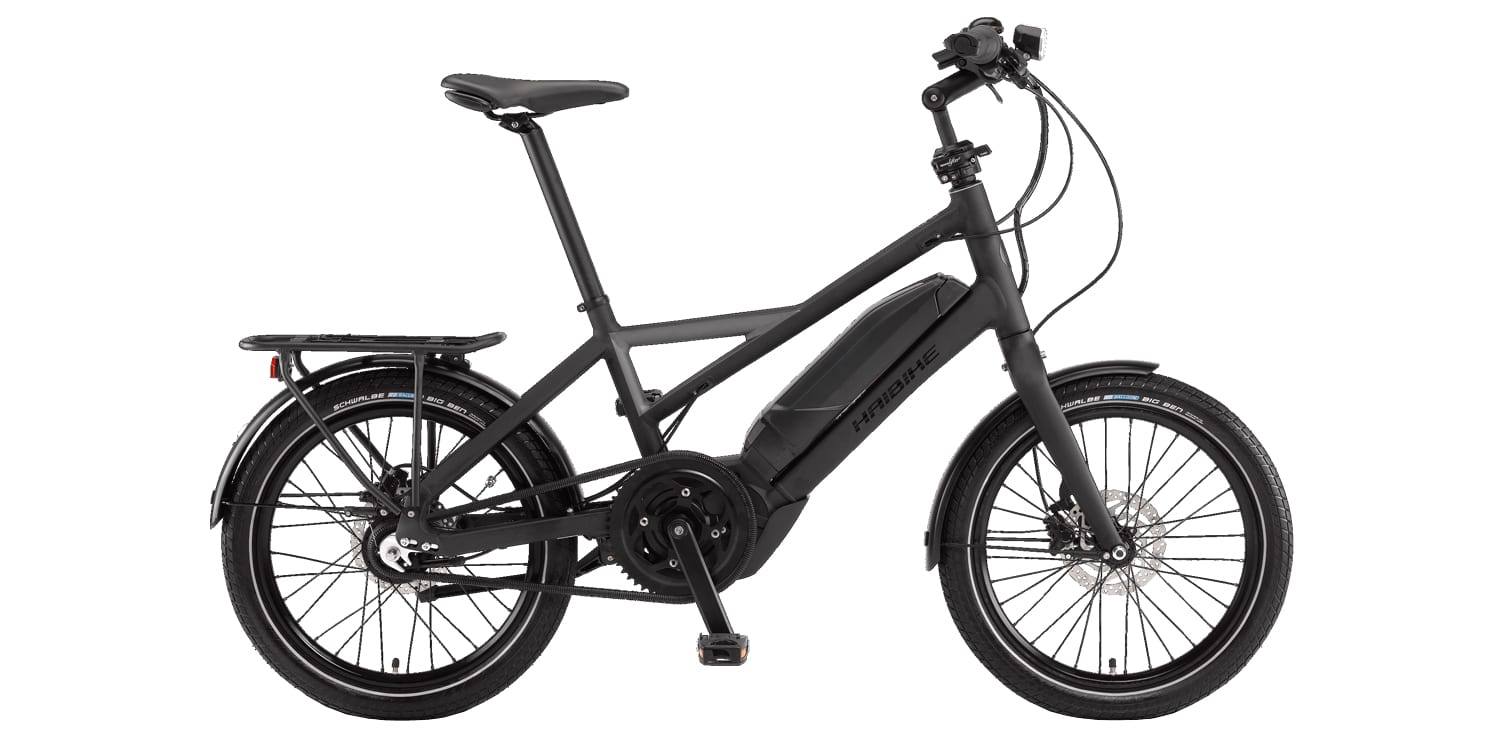
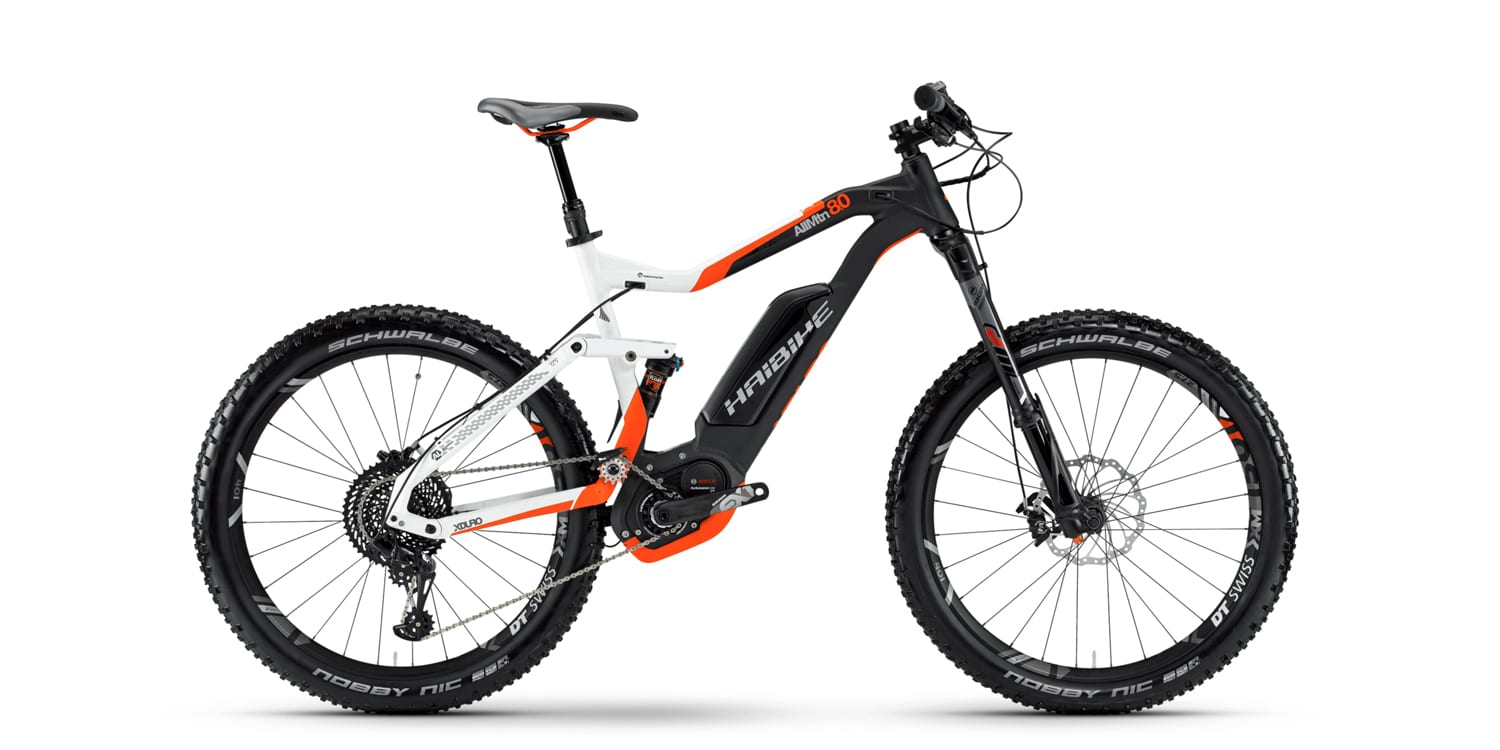
Bicyclista says
Wait! That’s my bike! I love it! (Both the review and my bike, that is.)
Court got the character of the bike right. I know the bike well, having ridden it for over half a year now. This review gives me confidence in Court’s judgement about ebikes in general.
In relation to the need to shift to keep the motor in its sweet spot, I like the choices Haibike made because it replicates what I had to do with my conventional, non-electric bikes, i.e. I had to shift to keep the cadence and the speed I liked. I recognize that this is probably different for each individual cyclist, so YMMV, and Court clearly has a different preference.
Speaking about personalizing the bike, I felt the handlebars were too wide, so I had the dealer cut one inch off from each side; I got ergonomic handles; better metal pedals; a more comfortable (for me) saddle; mini lights; a bell; replaced the inner tubes with thicker ones after successive punctures. I understand the bike is tubeless-ready, by the way.
The kickstand is not standard. Mine did not come with one. It would be nice to have one.
But most of all I love the stable and fun ride quality, the enormous ability of the bike (far exceeding mine, yet forgiving of my shortcomings), the 3-inch tires, the dropper seatpost (not only for downhills, but also for stopping and starting at red lights, the power of the motor despite its modest rating, and the surprisingly long range. I get 50 miles on HIGH, a mix of flat, steep downhills, and long climbs, with a gentle headwind one way and a gentle tailwind the other. Granted, I only weigh 150 lbs.
The Haibike Sduro AllMtn Plus is highly recommended!
Court Rye says
Wonderful comment! I enjoyed reading all of your little tips and upgrades. Glad you felt my review was on point… I do my best to explain what I’m feeling or seeing but not be too judgemental because as you said, each person has a unique riding style :)
Awesome to confirm that the kickstand may not be standard and that yours didn’t come with it. I hadn’t seen it on many other Haibikes before this one (at least on the mountain models). And I also use the seat post dropper sometimes when stopped at signs or red lights, that’s a great point :P
Alex says
I got this bike few weeks ago. I agree with the review, and I want to add my personal experience with the bike. I usually ride 2016 Stumpjumper FSR Comp 29er. I am All MTN rider and LOVE downhills. I was skeptical about this bike’s ability to go down as well as my Stumpy. However, this bike blew my socks off. The suspension is even better and the handling is absolutely fantastic. The plus tires make a huge difference and there is no downside in getting them, because you can aways mount a smaller size tire if you wanted to. The Motor works great too and this bike opened up for me completely new horizons. There were sections of the trails that I could never climb, this bike made it possible, so I can go to places I’ve never been before and explore new trails. I thought I would never do that, but I am putting my Stumpy on Craigslist. And the biggest tip: right now it’s on sale some places for the 2016 model. I am 5’7″ and I got a 40cm but I would recommend anyone over 5”7 to go with 44.
Court Rye says
Great feedback Alex! Glad to hear you’re enjoying the ALLMTN Plus, it’s a nice looking bike and the performance is solid. Great to hear your height and thoughts on sizing too ;)
Bob Armani says
Hello Court, Love your videos as usual. I test drove a few ebikes, however, I think my final choices are down to the 2016 AllMtn SL or the Hardseven SL. I am trying to obtain the front chainring specs for each bike, but I am unable to find them? Any idea how large they are and how many teeth?
Reason I ask: I test rode the Tubo Levo Hardtail and found the front chainring (24t) to be too small. When peddling in the highest PAS setting, I did not get enough speed and resistance as I would with a larger front sprocket. A little disappointing at that. I had higher hopes for this bike thinking it would be a prime candidate for purchase. Thanks a lot and regards!
Court Rye says
Hi Bob! This particular model (the Haibike SDURO AllMtn Plus) has a double chainring with 32/42T and I usually list this under the “cranks” section of the bicycle details specs. I hope this is what you’re looking for and that it’s available on other reviews. I do not usually comment on e-bikes that I have not tested in person and even then, sometimes the bikes vary over a season and small things change. Perhaps this and other reviews of mine can serve to help you make educated guesses :)
Bob Armani says
Hi Court- For some reason, I do not see my first post/ comment and your response posted in this section??
Sorry, I was referring to the All MTN **SL ** front chain ring teeth count and not the plus model in this review. I know the SL has 1 ring up front and not 2 like the plus model has. If you had a link to Haibike 2016 specs that would help too. I tried to go to the Haibike site, but could not find specs on their 2016 bikes.
I also noticed that some dealers are carrying 2017 models using a kind of cheap/cheesy new interface (Mylar board) that is mounted to the left next to the grip. I was a bit disappointed when I tried it at my LBS. The sales person claimed it is to save costs on these new production models. I much prefer the Yamaha center display interface. Thanks again Court!
Court Rye says
Right, there are some models using an LED interface without the big LCD and it probably was chosen to save money as the dealers suggested to you. Unfortunately, I don’t have access to any other 2016 specs. I try to review as many models as possible but with so many Haibike variations it’s just not possible at this stage. I wish I could help more, would love to hear back on what you find out or decide on and wish you luck!
Bob Armani says
Thanks Court, you are ALWAYS a great help! I will keep you posted on my findings with a new ebike purchase. I have been spending countless hours with research before I pull the trigger on a new ebike. What a great and fun education it has been with new discoveries of these awesome machines. We are all so grateful to have someone like you that has started an awesome community of people!
I am also looking forward to the Ebike Expo coming to town in June for the first time! I cannot wait. My favorite brands are going to be there. Best Regards!
Court Rye says
That will be a blast Bob! Which one are you going to? Thanks for the support, I’m doing my best ;)